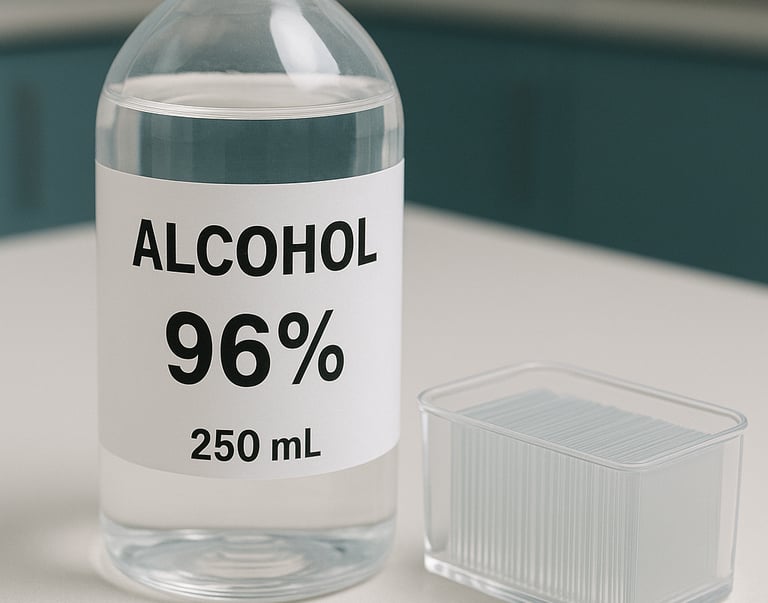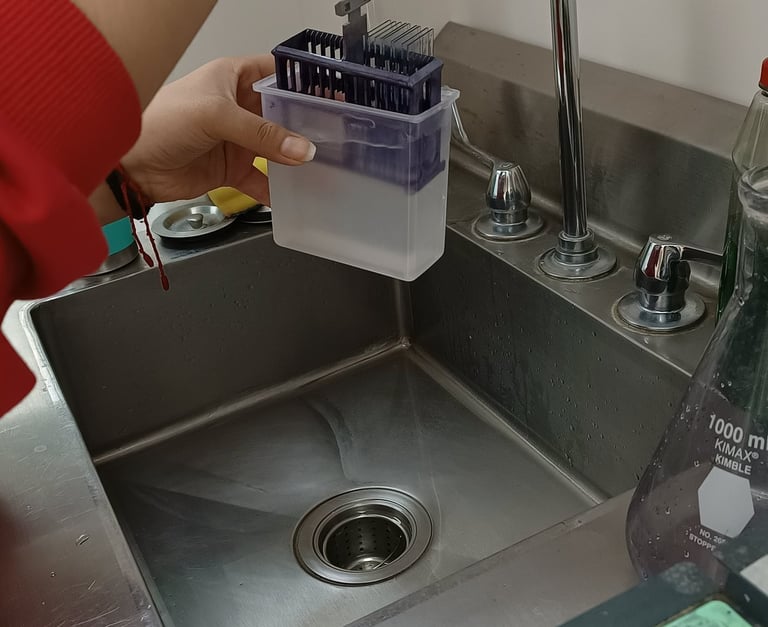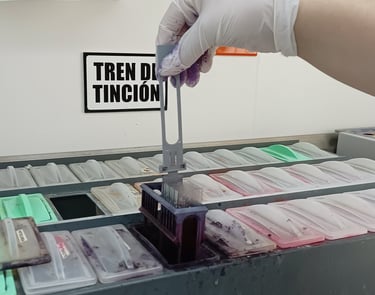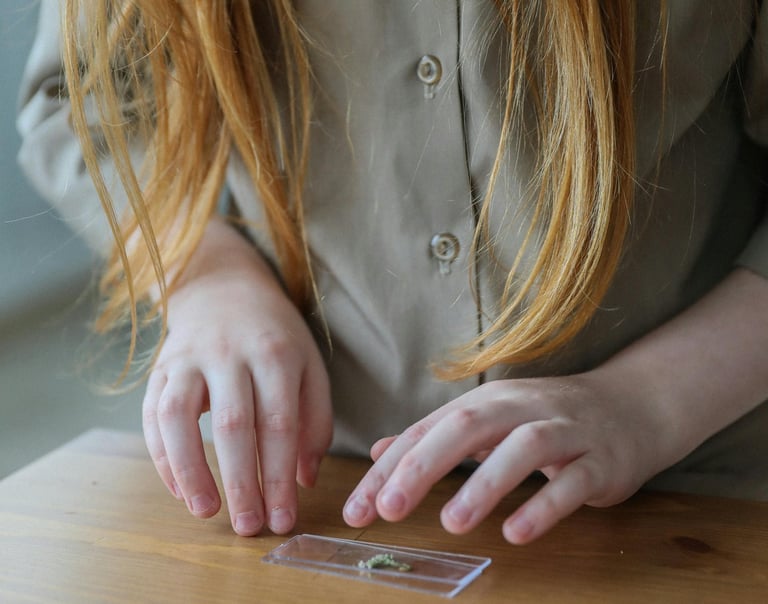
PAP STAINING PROTOCOL
REAGENT: 96° ALCOHOL (3 MINUTES)
Function: Initial fixative, dehydrates and fixes the sample to the slide. It can also remove impurities before staining.


STEP 1
STEP 2
REAGENT: COMMON WATER (15 DIPS)
FUNCTION: It is used to hydrate the sample after the alcohol and before the hematoxylin.
(IT IS RECOMMENDED TO DO THIS STEP 2 OR 3 TIMES)


STEP 3
REAGENT: HARRIS HEMATOXYLIN (7 TO 9 MINUTES)
FUNCTION: Basic nuclear stain: stains cell nuclei dark blue/black, allowing shape and chromatin to be observed.


STEP 5
REAGENT: ACID ALCOHOL (1 DIP)
FUNCTION: It acts as a differentiator, removing excess hematoxylin to leave only the dye well-adhered to the nucleus. It improves contrast.
STEP 6
REAGENT: COMMON WATER (15 DIPS)
FUNCTION: It is used to hydrate the sample after the alcohol and before the hematoxylin.
(IT IS RECOMMENDED TO DO THIS STEP 3 TIMES)


STEP 7
REAGENT: LITHIUM CARBONATE (30 DIPS)
FUNCTION: Neutralizes the acid in the acidic alcohol and changes the hue of the nucleus from red to blue (nuclear enhancement). This is a key step in improving contrast.
STEP 9
REAGENT: 96° ALCOHOL (15 DIPS)
FUNCTION: THE SAMPLE MUST BE DEHYDRATED TO ENTER THE ORANGE, SINCE THIS IS AN ALCOHOLIC BASE. SKIPPING THIS STEP COULD CAUSE THE DYE NOT TO ADHER WELL TO THE CELLS.


STEP 10
REAGENT: ORANGE G ( 2 TO 3 MINUTES )
FUNCTION: It stains keratinized cells (such as superficial squamous cells) and KERATIN orange.


STEP 11
REAGENT: 96° ALCOHOL (15 DIPS)
FUNCTION: THE SAMPLE MUST BE DEHYDRATED TO ENTER THE EA-50, SINCE THIS IS AN ALCOHOLIC BASE. SKIPPING THIS STEP COULD CAUSE THE DYE NOT TO ADHER WELL TO THE CELLS.


STEP 12
REAGENT: EA-50 ( 2 TO 4 MINUTES )
FUNCTION: Mixed cytoplasmic staining: stains non-keratinized cytoplasm. Eosin → pink. Green/blue → turquoise to green hues depending on intracellular pH.
STEP 13
REAGENT: 96° ALCOHOL (REPEAT 3 TIMES) (15 DIPS)
Function: DEHYDRATE SAMPLE AND CLEAN EXCESS OF OLD DYES.


STEP 14
REAGENT: ABSOLUTE ALCOHOL (15 DIPS)
Function: Final dehydration completely removes water before mounting with xylene. Increases cell transparency.
STEP 15
REAGENT: XYLOL ALCOHOL (15 DIPS)
Function: A blend that aids the transition between alcohol and pure xylene. It improves penetration and prevents the formation of droplets or bubbles.
STEP 16
REAGENT: XYLOL (15 DIPS)
Function: Clearing and mounting, cleans and clears the sample. It is immiscible with water, so it is used after dehydration. Leaves the slide ready for permanent mounting.


STEP 8
REAGENT: COMMON WATER (15 DIPS)
FUNCTION: Stops the effect of lithium carbonate and removes residues.
(IT IS RECOMMENDED TO DO THIS STEP 2 TIMES)


ASSEMBLY PROCESS


STEP 4


REAGENT: COMMON WATER (15 DIPS)
FUNCTION: It is used to hydrate the sample after the alcohol and before the hematoxylin.
(IT IS RECOMMENDED TO DO THIS STEP 3 TIMES)


The main difference between progressive and retrogressive staining lies in how the dye is applied and how the staining process is controlled. In progressive staining, the dye is applied until the desired color is achieved, while in retrogressive staining, excess dye is applied and then gradually removed until the desired color is achieved.
DIFFERENCES BETWEEN PROGRESSIVE AND REGRESSIVE STAINING
